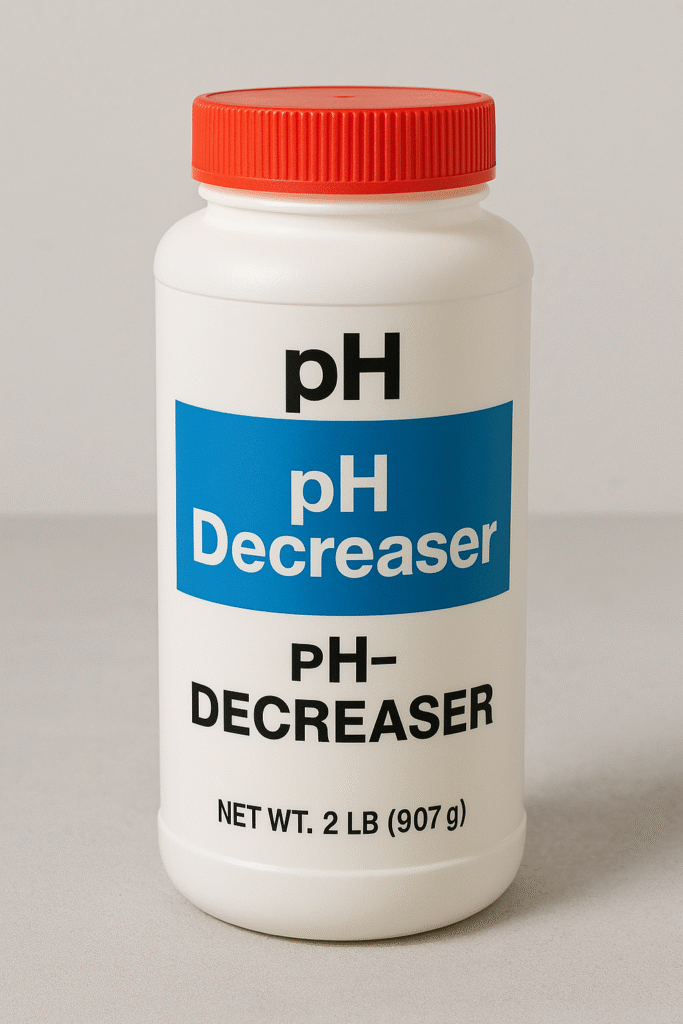Table of Contents - How to Lower Hot Tub Alkalinity: Expert-Tested Methods That Actually Work
- Hot Tub Alkalinity Too High? Your Expert Guide to Perfect Water Balance
- Hot Tub Alkalinity 101: Your Guide to Perfect Water Chemistry
- Testing Your Hot Tub’s Alkalinity: The Ultimate Guide to Perfect Readings
- Your Step-by-Step Guide to Taming High Alkalinity
- Your Hot Tub Questions Answered!
- Your Ultimate Guide to Hot Tub Alkalinity Products
- Your Burning Hot Tub Questions Answered!
- Your Guide to Perfect Alkalinity Balance
- Your Hot Tub Mysteries Solved!
- Final Thoughts – Your Hot Tub Chemistry Success Story
This blog post may contain affiliate links. As an Amazon Associate I earn from qualifying purchases.
Lower Hot Tub Alkalinity Fast: Proven Methods for Perfect Balance
Hot Tub Alkalinity Too High? Your Expert Guide to Perfect Water Balance
Ready to say goodbye to cloudy hot tub water and irritated skin? Your water’s hot tub alkalinity might be the sneaky culprit behind these frustrating issues. Picture this: when alkalinity climbs above the sweet spot of 80-120 ppm, your relaxing soak can quickly turn into a chemistry puzzle. Your sanitizer stops working properly, chalky scale appears on surfaces, and that crystal-clear water might even take on an uninviting greenish hue.
Let’s face it – juggling hot tub chemicals can feel like a tricky balancing act. But here’s the good news: bringing those alkalinity levels back to normal doesn’t require a chemistry degree. From simple household fixes like distilled vinegar to tried-and-true professional solutions, we’ll show you exactly how to restore your water’s perfect balance. Ready to dive in? Let’s turn your hot tub back into the relaxing oasis it should be!

Hot Tub Alkalinity 101: Your Guide to Perfect Water Chemistry
Remember that science class lesson about pH levels? Your hot tub takes those basics to a whole new level! Total alkalinity plays the role of your water’s faithful guardian, keeping those pesky pH levels steady and your soaking experience just right.
The Magic Behind Alkalinity
Think of alkalinity as your hot tub’s built-in bodyguard. It’s the special mix of carbonates, bicarbonates, and other alkaline substances that keep your spa water balanced. Just like a good friend, alkalinity jumps in first when trouble’s brewing, making it your go-to test before adding any chemicals to your spa.
Finding Your Hot Tub’s Sweet Spot
Want to know the secret to perfect hot tub water? Keep your alkalinity between 80-120 parts per million (ppm). This magic number helps you:
Spotting High Alkalinity Troubles
Is your hot tub trying to tell you something? Here are the warning signs that your alkalinity’s climbing too high:
Water Looking Suspicious?
- Cloudy water that’s lost its sparkle
- An unwelcome greenish tint
- Mystery particles floating around
Equipment Acting Up?
- Scale buildup making itself at home
- Sluggish water flow
- Filters and pipes playing hard to get
- Water pressure going through the roof
Chemistry Gone Wild?
- Stubborn pH that won’t budge (hello, pH lock!)
- Chlorine taking an unexpected vacation
- Chemical levels playing hide and seek
Your Alkalinity Cheat Sheet
Getting these basics right sets the stage for spa success. Plus, when alkalinity’s happy, your sanitizers work better, and your hot tub stays in tip-top shape longer.
Testing Your Hot Tub’s Alkalinity: The Ultimate Guide to Perfect Readings
Ready to become a hot tub testing pro? Perfect water chemistry starts with accurate measurements. Let’s dive into the best ways to check your alkalinity levels and unlock the secrets of crystal-clear water.
Your Testing Toolkit: Choosing the Right Method
The spa world offers three trusty ways to measure alkalinity:
Test Strips: The Quick Fix
- Perfect for daily checks
- Results in seconds flat
- Hot tub owners’ favorite
- Great for regular checkups
Liquid Test Kits: The Detail Detective
- Gets down to the nitty-gritty
- Powered by phenol red and orthotolidine
- Sharper accuracy than strips
- Your best friend for thorough testing
Professional Lab Testing: The Deep Dive
- The whole nine yards
- Your local spa dealer’s specialty
- Perfect when water’s acting strange
Top-Notch Testing Tools:
Cracking the Testing Code
Your Step-by-Step Testing Adventure:
- Quiet those jets and pumps
- Scoop water from elbow-deep
- Follow your kit’s testing dance
- Play the waiting game (15-30 seconds)
- Match those colors like a pro
- Keep a testing diary
Smart Testing Tips:
- Check those expiration dates
- Extra tests during pool party season
- Test before chemical cocktails
- Stick to your testing schedule
- Cool, dry storage keeps supplies happy
Reading Your Results:
- Total Alkalinity sweet spot: 80-120 ppm
- Natural light shows true colors
- 30-second window for best results
- Double-check surprising numbers
Warning Signs of Testing Troubles:
- Numbers playing ping-pong
- Colors gone wild
- Results in no-man’s land
- Slow-motion color changes
Remember, alkalinity’s your first testing stop – it’s the foundation for everything else. Nail these testing basics, and you’ll be well on your way to spa water perfection!
Your Step-by-Step Guide to Taming High Alkalinity
Ready to bring those alkalinity levels back to earth? Let’s walk through some spa-tested methods that really work. Whether you’re a chemical whiz or prefer the natural route, we’ve got you covered!
The pH Decreaser Method: Your Go-To Solution
Want the most reliable way to lower alkalinity? A pH decreaser containing sodium bisulfate is your best friend. Here’s your game plan:
- Do the math: 3 ounces of pH decreaser per 1,000 gallons drops alkalinity by 10 ppm
- Sprinkle time: Scatter the powder while your jets dance
- Take five: Let it circulate for 5-15 minutes
- Check back: Test again after 24 hours
Mother Nature’s Solution: The Vinegar Method
Love keeping things natural? White vinegar might be your perfect match:
- Pour 1/2 cup vinegar for every 100 gallons
- Let those jets run gentle
- Give it 5 minutes
- Still high? Repeat the dance
The Bubble Method: Aeration Magic
Here’s a clever trick using your tub’s own features:
- Fire up those jets and air features
- Free your spa from its cover
- Keep pH between 7.0-7.4 for best results
- Check levels every 4 hours
Your Success Roadmap:
Safety First: Protecting Your Spa Paradise
Keep these safety essentials in mind:
Gear Up
- Gloves and goggles are non-negotiable
- Keep chemicals and skin separate
- Fresh air is your friend
- No chemical mixing experiments
- Cool, dry storage spots only
- Follow those instructions religiously
Perfect Timing
- Space treatments 15 minutes apart
- Keep water moving
- Major changes need 24 hours to settle
Hot Tub Pro Secret: Keep a chemical diary – your future self will thank you!
Your Hot Tub Questions Answered!
“Help! How often should I grab those test strips?”
Think of your hot tub like a pet – it needs regular check-ups! Aim for twice-weekly alkalinity tests, especially during those splash-happy summer months. Your spa will thank you with crystal-clear water!
“My alkalinity’s climbing – what’s the deal?”
Several spa shenanigans can boost your alkalinity:
- Rain dancing in your uncovered tub
- Too many chemical treatments
- Your sanitizer playing tricks
- That neighborhood pool party you hosted
- Mother Nature’s mood swings
- pH 7.6-7.8: A gentle 1/2 tsp per 200 gallons
- pH 7.8-8.0: Step it up to 3/4 tsp per 200 gallons
- pH 8.0-8.4: Time for 1 1/2 tsp per 200 gallons
- Keep those chemicals cool and dry
- Test water chemistry twice weekly
- Fresh testing supplies yearly
- Follow those instructions like a recipe
“Can I still take a dip while fixing alkalinity?”
Hold that thought! Give your spa about 6 hours after adding chemicals before jumping in. Think of it as your hot tub’s “me time” – it needs a moment to get its chemistry just right. Safety first, soaking second!
Feeling more confident about tackling those tricky alkalinity levels? You should! Whether you’re team pH decreaser or prefer the natural vinegar approach, you’ve got all the tools needed for spa success. Remember, your hot tub’s sweet spot lies between 80-120 ppm – think of it as your water’s happy place.
The secret sauce? Regular testing and quick action when numbers drift. Your reward? Crystal-clear water that’s gentle on both your skin and equipment. Plus, you’ll dodge those pesky issues like cloudy water and stubborn pH levels that make other hot tub owners scratch their heads.
Ready to put your new alkalinity knowledge to work? Start with a fresh water test, grab your preferred treatment method, and watch your hot tub transform into the perfect relaxation spot. After all, isn’t that what hot tub ownership is all about?
Happy soaking!
Your Ultimate Guide to Hot Tub Alkalinity Products
Wondering which products will keep your spa’s chemistry in check? Let’s explore the tried-and-true solutions that spa professionals swear by.
pH Decreaser: Your Alkalinity’s Best Friend
SpaGuard pH Decreaser tops our spa-tested list for alkalinity control. This crystal-crushing formula makes quick work of high alkalinity levels. Here’s your dosing cheat sheet:

Testing Tools: Your Water’s Truth-Tellers
Want spot-on readings every time? Digital test strip readers bring laboratory precision to your backyard. Let’s compare your options:
Testing Showdown:
| Method | Accuracy | Ease of Use | Cost |
|---|---|---|---|
| Test Strips | Good | Excellent | Low |
| Titration Kit | Excellent | Moderate | High |
| Digital Reader | Very Good | Good | Moderate |
Product Face-Off
| Product Feature | pH Decreaser | Test Strips | Digital Reader |
|---|---|---|---|
| Shelf Life | 2 years | 2 years | 3+ years |
| Usage Frequency | As needed | Weekly | Weekly |
| Application | Direct pour | Dip and read | Electronic |
| Result Speed | 30 minutes | 15 seconds | 30 seconds |
Spa Pro Secrets:
Your Burning Hot Tub Questions Answered!
“Which pH fighter packs the quickest punch?”
Looking for speed? SpaGuard pH Decreaser leads the pack with its lightning-fast dissolving granules. But remember – faster isn’t always better! Your spa prefers gentle, steady changes over quick fixes. Think of it like easing into your hot tub rather than jumping in!
“Test strips looking tired – time for new ones?”
Those trusty test strips deserve retirement after 6 months, even if they haven’t hit the water! Found an old bottle in your spa cabinet? Check that expiration date – expired strips tell tall tales about your water chemistry. Fresh strips mean accurate readings, and accurate readings mean happy soaking!
“Can I create my own chemical cocktail with different brands?”
Hold that mixing spoon! Different brands might look similar but play by their own rules. Stick to one brand family for your chemicals – they’re designed to work together like a well-rehearsed dance team. Mixing brands? That’s like inviting chaos to your spa party!
Picture your perfect spa moment: crystal-clear water, perfect temperature, and chemistry that’s right on target. That’s not just a dream anymore! Armed with your new alkalinity know-how, you’re ready to become your neighborhood’s hot tub guru.
Remember those pesky high alkalinity symptoms we talked about? Cloudy water, scale buildup, and wonky pH levels don’t stand a chance against your expanded chemical toolkit. Whether you chose the quick-acting pH decreaser route or fell in love with the natural vinegar method, you’ve got options that really work.
The real secret? It’s all about staying consistent with your testing routine and jumping on those alkalinity changes early. Think of it as giving your hot tub a regular health check-up – a little attention goes a long way!
Ready to dive into perfect water chemistry? Your hot tub’s about to become the relaxation oasis you always wanted. Now that’s something worth soaking in!
Happy tubbing!
Your Guide to Perfect Alkalinity Balance
Want to know the secret to spa water that stays crystal clear week after week? It’s all about creating your perfect maintenance rhythm. Let’s unlock some spa pro strategies that keep your water chemistry singing in harmony!
Your Weekly Spa Success Schedule
Think of your hot tub like a beloved pet – it thrives on routine care. Here’s your weekly game plan for alkalinity perfection:
Testing Time
- Give those test strips a workout twice weekly
- Always test before playing chemist
- Keep a spa diary – trends tell stories!
Pro Check-Ups
- Monthly dealer water analysis
- Double-check your home testing skills
- Grab those expert tips
Keeping Trouble at Bay
Your Prevention Power Moves:
Circulation Magic
- Keep that filter happy
- Water flow is your friend
- Clean filters = happy spa
Chemistry Mastery
- Spot issues early, fix them fast
- Baby steps with adjustments
- pH and alkalinity – best friends forever
Smart Soaking
- Count those splashes
- Adjust care with use
- Post-party testing ritual
Trouble in Paradise? Quick Fixes:
Cloudy Water Blues
- Culprit: High alkalinity’s calcium party
- Hero: Your trusty pH decreaser
- Shield: Regular testing keeps clouds away
Equipment Guardian
- Watch that filter performance
- Regular system cleanings
- Fresh water on schedule
Your Hot Tub Mysteries Solved!
“My alkalinity’s doing the cha-cha – what gives?”
Your spa water’s chemistry loves to dance! Sudden alkalinity spikes might be thanks to:
- That surprise summer shower
- Your spa cover taking an unexpected break
- Extra splashing from weekend parties
- New fill water playing tricks
- Those fancy water features working overtime
“When should my test gear get a check-up?”
Digital readers need a friendly pat on the back every 3 months – just like visiting the dentist! Test strips? They’re ready to rock straight from the bottle. But remember, even the fanciest equipment needs fresh batteries and clean sensors to keep your readings spot-on!
“Does Mother Nature mess with my alkalinity?”
You bet! Your hot tub’s like a weather-sensitive friend. Rain showers can dilute your chemistry, while sunny days might concentrate those levels. Living in a rainy area? Keep your test strips handy and your spa cover snug. Your water’s perfect balance depends on it!
Remember when balancing your hot tub’s alkalinity felt like solving a puzzle blindfolded? Those days are behind you now! From pH decreasers to vinegar solutions, you’ve got a full menu of options to keep your spa’s chemistry just right.
The real magic happens when you make water testing part of your spa routine. Like checking your morning coffee’s temperature, it becomes second nature. Your reward? Crystal-clear water that feels silky-smooth against your skin, and a hot tub that’s always ready for those perfect soaking moments.
Sure, alkalinity might play hide and seek sometimes, but now you know exactly how to bring it back to that sweet spot between 80-120 ppm. Whether you’re a chemical whiz or prefer natural solutions, you’ve got this!
Time to grab those test strips and turn your hot tub into the relaxation oasis it was meant to be. After all, perfect water chemistry means more time enjoying those bubbles and less time playing chemist!
Happy soaking, spa friends!
Final Thoughts – Your Hot Tub Chemistry Success Story
Remember your first peek at those alkalinity test strips? They probably looked like a secret code only spa professionals could crack! But look at you now – armed with pH decreasers, vinegar solutions, and testing know-how that would make a chemist proud.
Your hot tub journey’s about more than just numbers, though. It’s about transforming your backyard retreat into that perfect escape where the water feels just right against your skin, and chemical worries are the last thing on your mind. Those tricky alkalinity levels between 80-120 ppm? They’re not just targets anymore – they’re your recipe for spa perfection.
Think of your new alkalinity skills like having a spa superpower. Whether you’re battling cloudy water or keeping those pH levels in check, you’ve got all the tools you need right in your maintenance arsenal. Best of all? You know exactly when to use them!
Ready to put your chemistry skills to work? Your perfect spa moment awaits – crystal clear water, balanced chemistry, and nothing but relaxation ahead. Now that’s something worth celebrating!
Happy tubbing, spa friends!



